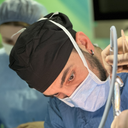Posted underFacelift q&a
Surgeons seen to have their out buzz words for facials. Deep plane, refresher face lift. Are they really different? (Photo)
I’m 68 years old. 5’5”. 147 pounds
Answers (24)
From board-certified doctors and trusted medical professionals

Dr. Jacob Tower, MD
Board Certified Facial Plastic Surgeon, Board Certified in Otolaryngology – Head and Neck Surgery
Answer








